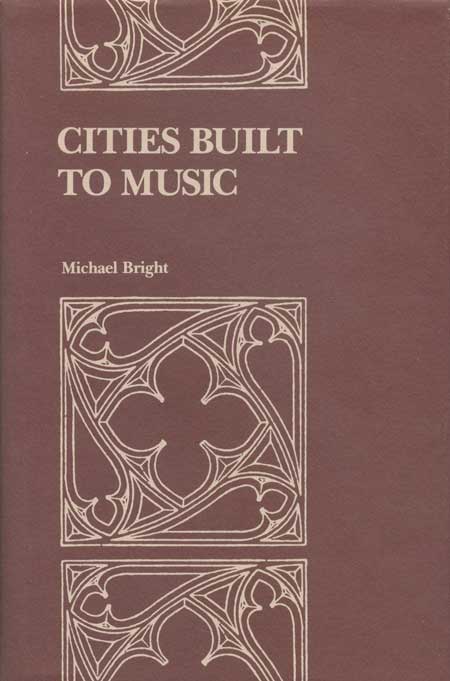| click here to read the complete text of the book | leave / read comments and critiques of the book |

Cities Built to Music
Aesthetic Theories of the Victorian Gothic Revival
Michael Bright
“This superb study examines the aesthetic bases of the Victorian urge to build cities to music that we now refer to as the Gothic Revival . . . highly recommended.” —Nineteenth-Century Fiction
“A learned, wide-ranging, and sympathetic defense of architectural medievalism.” —Nina Auerbach, Studies in English Literature
In August of 1861, a congress was convened in Antwerp to consider why it was that the nineteenth century had adopted no distinctive architectural style as its own. That such a meeting took place is of substantially greater importance than any business conducted and resolutions passed by the delegates, for it suggests the profound dissatisfaction with the state of architecture in Europe that pervaded the continent at the time.
In England, the chief critic of the motley assortment of disharmonious styles was A. W. N. Pugin, who, in 1843, declared that architecture, along with the other arts, was passing through “a transitional state” (the phrase was to recur over and over again throughout the century in a variety of contexts)—an aesthetic wasteland in which, following the decay of the Renaissance, an anarchic individualism fueled by a runaway eclecticism and a shoddy reliance on shams and disguises was ultimately to prevail. Late in the same decade, John Ruskin was to propose a stringent, indeed a radical, reform.
Professor Bright undertakes an etiological explanation of why the Gothic style was able to satisfy the artistic expectations of the Victorians. He dismisses as only partly adequate the frequently offered answers—the “religious,” which points to the intimate relations between Revivalist architects and the Ecclesiologists and between Pugin and Roman Catholicism, and the “literary,” which relies on the immense popularity of the novels of Sir Walter Scott and the mania for all things medieval they inspired. Rather he finds in the return to a style that was dominant before the Renaissance, and in the rejection of the nineteenth century’s earlier preference for the neoclassical, a reflection in architecture of the generally troubled state of Victorian society so apparent in the other arts of the period.
Matthew Arnold’s “ignorant armies clash by night,” and Tennyson’s Arthur “saw not whom he fought” in the “dim, weird battle of the west.” John Stuart Mill identifies as “the first of the leading peculiarities of the present age . . . that it is an age of transition. Mankind have outgrown old institutions and old doctrines, and have not acquired new ones.” Carlyle laments, “The Old has passed away: but alas, the New appears not in its stead.” Restlessness, uncertainty, and confusion abound; and the idea is often repeated throughout the century that the momentum of change, far from slowing to the settled condition from which new and universal values can emerge, continues to accelerate at an alarming and vertiginous rate that caused Thomas Arnold to comment that “we have been living, as it were, the life of three hundred years in thirty,” and that left his son, twenty years later, “Wandering between two worlds, one dead, / The other powerless to be born.”
For Matthew Arnold, it was culture that would provide the unity—the Scholar-Gypsy’s “one aim, one business, one desire”—that was to be the cure for “this strange disease of modern life, / With its sick hurry, its divided aims.” It was unity, too—“a singleness of aim, of a devotion to and community of effort in the advancement of art”—that Sir George Gilbert Scott urged, as its president, on his colleagues in the Institute of British Architects. For Pugin and a host of other artists and critics of art and society, unity lay in revival of the Gothic.
Michael Bright is professor of English at Eastern Kentucky University.
| 1984 310 pp. | This title is no longer available in a traditional print edition. Click here for free access to the book’s full text. |

